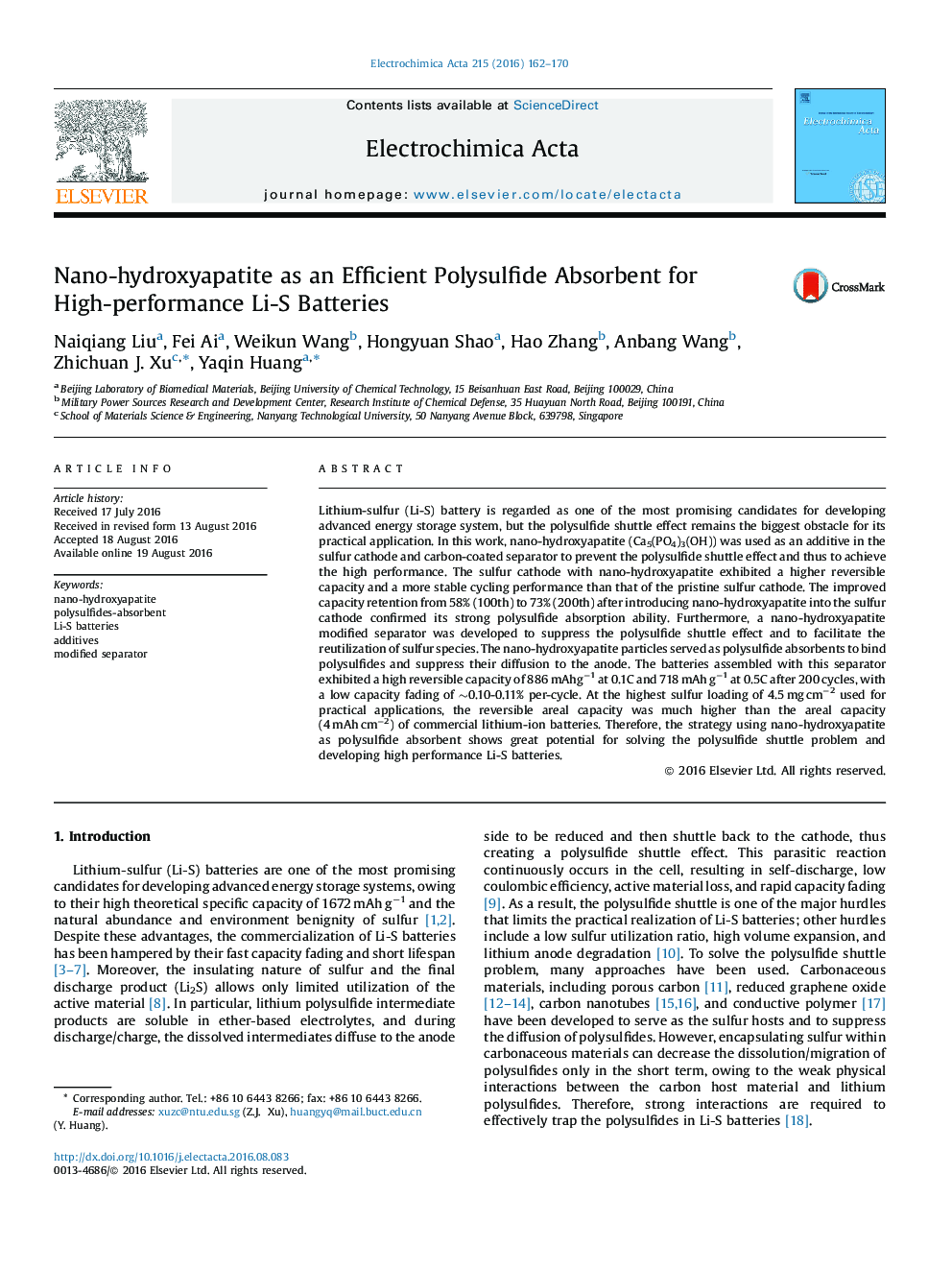| کد مقاله | کد نشریه | سال انتشار | مقاله انگلیسی | نسخه تمام متن |
|---|---|---|---|---|
| 6473111 | 1424142 | 2016 | 9 صفحه PDF | دانلود رایگان |
- Nano-HA has been demonstrated as an efficient polysulfide absorbent.
- The shuttle effect of polysulfide in Li-S battery has been confined by the nano-HA.
- Nano-HA used as additive improved electrochemical performance of Li-S battery.
Lithium-sulfur (Li-S) battery is regarded as one of the most promising candidates for developing advanced energy storage system, but the polysulfide shuttle effect remains the biggest obstacle for its practical application. In this work, nano-hydroxyapatite (Ca5(PO4)3(OH)) was used as an additive in the sulfur cathode and carbon-coated separator to prevent the polysulfide shuttle effect and thus to achieve the high performance. The sulfur cathode with nano-hydroxyapatite exhibited a higher reversible capacity and a more stable cycling performance than that of the pristine sulfur cathode. The improved capacity retention from 58% (100th) to 73% (200th) after introducing nano-hydroxyapatite into the sulfur cathode confirmed its strong polysulfide absorption ability. Furthermore, a nano-hydroxyapatite modified separator was developed to suppress the polysulfide shuttle effect and to facilitate the reutilization of sulfur species. The nano-hydroxyapatite particles served as polysulfide absorbents to bind polysulfides and suppress their diffusion to the anode. The batteries assembled with this separator exhibited a high reversible capacity of 886 mAhgâ1 at 0.1C and 718 mAh gâ1 at 0.5C after 200 cycles, with a low capacity fading of â¼0.10-0.11% per-cycle. At the highest sulfur loading of 4.5 mg cmâ2 used for practical applications, the reversible areal capacity was much higher than the areal capacity (4 mAh cmâ2) of commercial lithium-ion batteries. Therefore, the strategy using nano-hydroxyapatite as polysulfide absorbent shows great potential for solving the polysulfide shuttle problem and developing high performance Li-S batteries.
Journal: Electrochimica Acta - Volume 215, 10 October 2016, Pages 162-170
